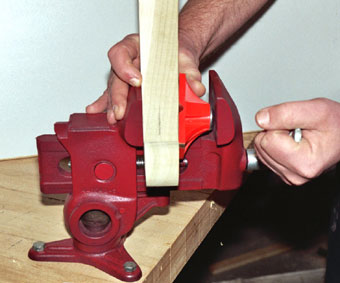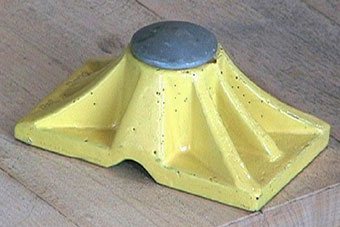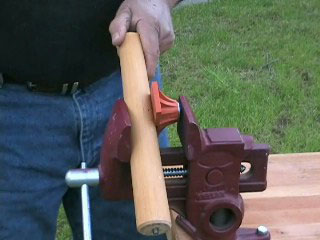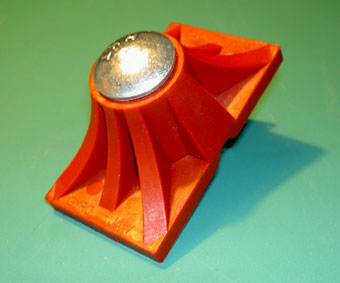
At Woodworker’s Journal, we see press releases for new products nearly every week of every year. The pipeline for the latest, greatest gizmo never runs dry. And, of course, for companies that manufacture woodworking tools and supplies, product development is crucial for keeping the doors open and the lights on. It’s a simple fact of staying in business.
When you know what happens behind the scenes, it’s easy to understand why the big, established brands are able to keep new products pouring into woodworking catalogs and onto the pages of our magazine. Design teams, focus groups, engineers, product managers, advertising agencies, manufacturing channels, distribution networks and obviously capital — lots and lots of it — all come together to take new products from concept to market. There’s a certain convection that goes along with being a dominant player in this industry and having a recognized brand.
That’s why it’s inspiring to learn how tough it can be for startup companies or individuals to get their foot in the new-product door. Ron and Mike Iacobelli’s Gyrojaw is a good example of what I’m talking about here. These two brothers have been working on a better solution for vise clamping for nearly 15 years. They’ve experienced their share of challenges along the way. And, even now that Gyrojaw is available for sale, its future rests in the hands of woodworkers and DIYers willing to give it a try. But, whether it succeeds or fails in the long run, the Iacobellis have taken their fledgling product further than many of us might dare to try.
Last week I had a chance to speak with Ron, who explained how Gyrojaw works and the “twisting road” he and his brother have taken to get it this far. In a nutshell, Gyrojaw is a pyramid-shaped fixture that fits against a jaw of a metal vise. A carriage bolt is embedded into one end, and its curved head allows the Gyrojaw to be pivoted to many angles and then clamped tightly against a workpiece. Friction and pressure between Gyrojaw and the vise surface is what holds it in place. The opposite end basically amounts to an articulating vise face. With Gyrojaw in position, the device can help you clamp curved, tapered and other non parallel-faced workpieces without the usual wedges or other workarounds to secure them.
The idea came to Ron in the mid-90s while he was working as a machinist for Michigan’s automotive die and modelmaking industry. Also a lifelong woodworker, Ron believed there had to be a way to expand the gripping capability of an ordinary vise to make it better suited for holding odd-shaped parts. At the time, there was no good solution.
“When you’re woodworking, you need to clamp things like pediments, spindles or tapered spindles and legs that don’t have parallel faces … Before Gyrojaw, I wouldn’t have known how to put these sorts of parts in a typical vise. I’d immediately try to think of another way to do it,” Ron recalls. But once he landed on the concept of a pivoting vise face, it seemed like it could open up a whole new way to approach clamping.
His first crack at a design consisted of a wooden block with a ball bearing fitted into one end. But, the bearing’s curvature and hardness caused it to slip under pressure. After some trial and error, a carriage bolt proved to be the better solution. Ron made a silicone mold of that first wooden model and injected it with polyurethane to make a synthetic prototype. That led to one made of nylon and then to the current iteration, which is glass-reinforced nylon.
Early on, Ron joined forces with his brother Mike, a tool designer with a CAD background, who worked out other details, such as how to create a cost-effective injection mold. Mike experimented with various ribbing solutions to make Gyrojaw sufficiently strong but still lightweight. He also needed to determine the optimal size for Gyrojaw, so that it can be pivoted to a range of different positions and still work inside of most vise sizes. The Iacobellis took their design to a local mold-maker to build the final tooling, and he in turn found them an injection molder to mass-produce the product.
Making a functional, affordable vise accessory took years of development, but it was only the tip of the iceberg. In order to help contain costs, Ron and Mike began to seek a manufacturing partner. Two and half years ago, an Iowa-based automotive company seemed interested, but they required a 3,000-order minimum to cover their tooling costs before they would commit to a long-term contract. The company could only muster half that many orders and decided to part ways with Ron and Mike after a year of negotiations.
“They thought they could sell Gyrojaws out of Mac Tools and Snap-on trucks. What I tried to explain and could never make clear to them is that our product is best suited for woodworking…they just didn’t have contacts in the woodworking industry. Our product also needs to be demonstrated to be believed,” Ron recalls.
The Iacobellis have also pursued several vise manufacturers for partnership, but Ron admits that those efforts haven’t proven successful at this point. So, Ron and Mike are back to covering their own manufacturing costs, along with the help of two investor friends.
There have been marketing challenges, too. The brothers spent around $15,000 to produce a Gyrojaw infomercial earlier this spring. It aired in 30 cities for three weeks on Comcast Networks, culminating in 3,000 aired commercials. Television seemed like a promising avenue to pursue. But in hindsight, Ron feels it was an expensive effort that has produced only modest sales — even for an item that retails for $14.95.
Between the tooling and manufacturing expenses, the legal fees involved with patenting and their marketing efforts, Ron and Mike have shouldered around $50,000 of costs to bring Gryojaw to market. This number could have been much higher, Ron believes, were it not for their tool and die experience. Still, building a better mousetrap has taken its pound of flesh.
“We’re both retired, and it’s hard to replace that cash with expenditures we continue to make,” Ron says.
So, why stick with it? Logically, both men hope to see a return on their investment up to this point, but there’s more to this venture than that. For the Iacobellis, sheer determination plays into it, too. Ron and Mike are convinced that a Gyrojaw should be sitting next to every shop vise, and it’s an accessory whose time has come. “The ability of Gyrojaw to automatically adjust to what you’re clamping and transfer a straight line of force through to the other jaw is a breakthrough; our invention is as easy as tightening a vise.”
Whatever ultimately fuels these guys and keeps the dream alive, I admire their efforts. Personal sacrifice is something we editors don’t read in the subtext of a press release. For Ron, it just goes with the territory.
“Whatever you do, whether it’s building a woodworking project or inventing something new, you have to have passion. Passion takes you through the bad times…We’re just looking for that door of opportunity we haven’t quite opened yet.”








